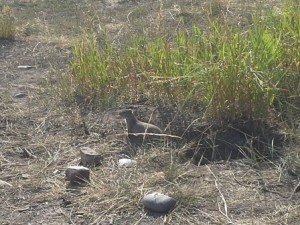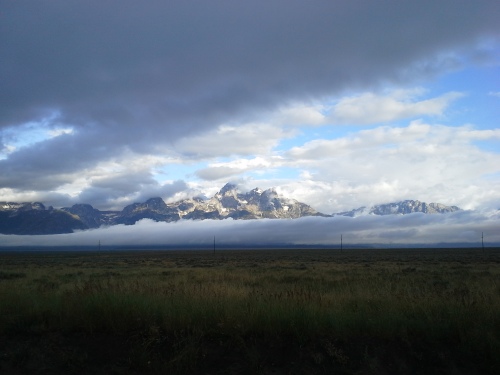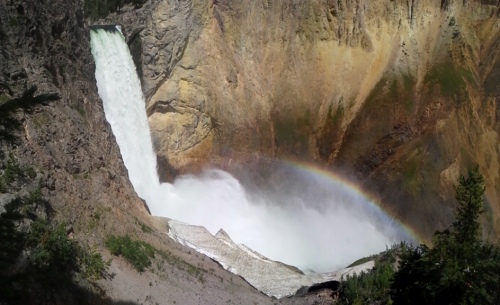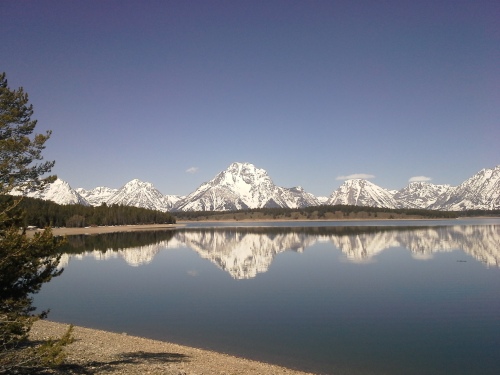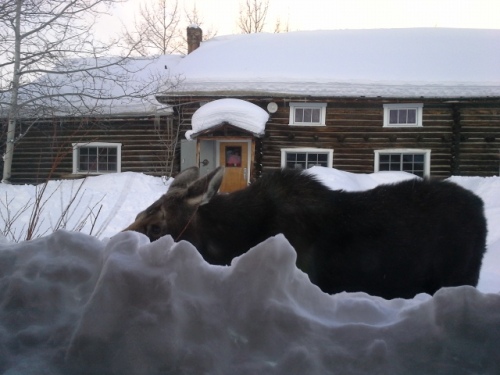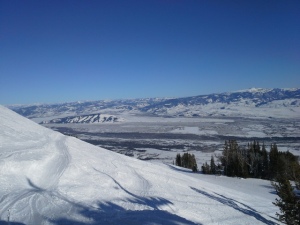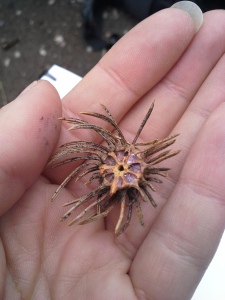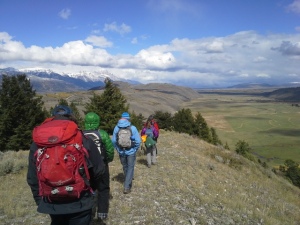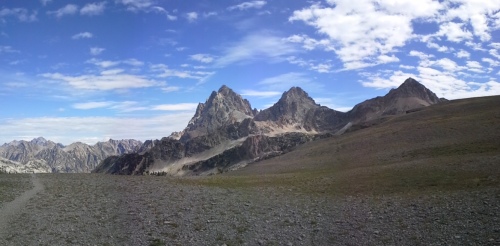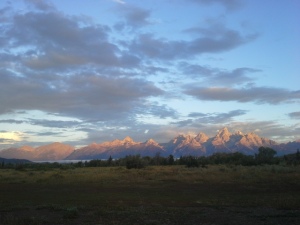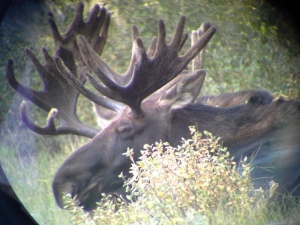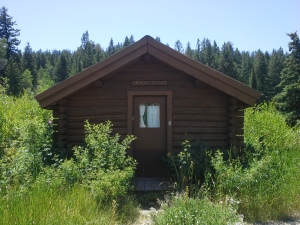I awoke suddenly. I noticed all of my senses heightened and my body fully alert. No thoughts crossed my mind. I listened. Munch, munch, munch. I peered out my tent under my rain fly where I heard the sound of munching. A large brownish black hoof stepped about three feet from my tent. Then another. Munch, munch, munch. Bison. Multiple bison. Very close to my tent.
The bison seemed calm, so I stayed calm. I laid there and listened, secretly hoping they would not accidentally step on my tent. Maybe they just needed breakfast and breakfast happened to grow near the free campsite I occupied. Munch, munch, munch. I decided to look at the positive: at least I did not need to go to the bathroom first thing in the morning! The bison munched and I listened. Each time a hoof clomped down, I could feel the vibration in the ground. My rain fly blends in fairly well with the pale grasses. I hope they do not run into my tent. Munch, munch, munch.
Eventually, after about half an hour of munching, the bison continued on their way. From what I could gather, they munched their way north out of the small aspen grove. I felt my body begin to relax as the munching grew fainter and I no longer felt the ground vibrate with their steps.
When I could hear them no longer, I got out of my tent cautiously and looked around. I could not see any wildlife in the vicinity, so I began to make breakfast and a healthy amount of hot water for yerba mate. I set up a chair in front of hippie TV, i.e. the Tetons, and sipped mate. I had decided to camp in the national forest near Grand Teton National Park for two weeks to further enjoy the area and hopefully hike what I wanted to hike all year at grad school, but did not have the time to due to schoolwork. To my surprise, I thoroughly enjoyed lazy mornings drinking mate and watching the clouds change just as much as hiking.
As I sat there with mate and a good book, I watched as the clouds changed shapes and colors. The clouds and the mountains played peek-a-boo all morning long. The best part about sitting quietly and watching: the wildlife became accustomed to my presence and began to play, eat, run, and fly right in front of me.
Three ground squirrels lived near my campsite. Two seemed to have some sort of dominance over the third, but the third had sneaky tendencies. While one of the first two ground squirrels stood guard from a prime fallen log, the other ground squirrel nibbled at the ground or stood on its hind legs and used its forelegs to pull down a wild grass three times its size to eat the seeds on the top. The sneaky ground squirrel took every available opportunity to sneak toward the other two ground squirrels and then hop away.
A female mountain bluebird flew in and startled the ground squirrels. All four froze, eying each other for a few moments. Deciding they could all eat peacefully, they began ignoring each other and carrying on with their business in close proximity.
Half an hour later, I heard the clear call of a red tail hawk in the distance, but coming closer. All three ground squirrels immediately dove into their holes and I searched the skies. I heard the call several more times before I located the hawk flying in gracefully above the aspens.
The next night, the temperature dropped into the upper 30s and I fell asleep with my hat on planning on waking up early in the morning. The moon shown so brightly, that I could see just fine inside my tent without a head lamp. However, I did not plan on waking up around 2:30am. Grunt. Munch, munch, munch. Grunt. Instantly alert, I laid in my sleeping bag listening. My body did not feel the ground vibrate, and the munching seemed faint, but apparent. The sounds came from the direction of my feet, so the bison munched to the west. After careful listening, I decided to poke my head out and see how far away the bison munched. They peacefully munched and grunted down in the sagebrush, about fifty feet or so away from my tent. After the previous morning, that distance seemed oddly comforting. Laying awake, I listened and heard quite a variety of bison noises that I had never heard before, all variations of grunts.
